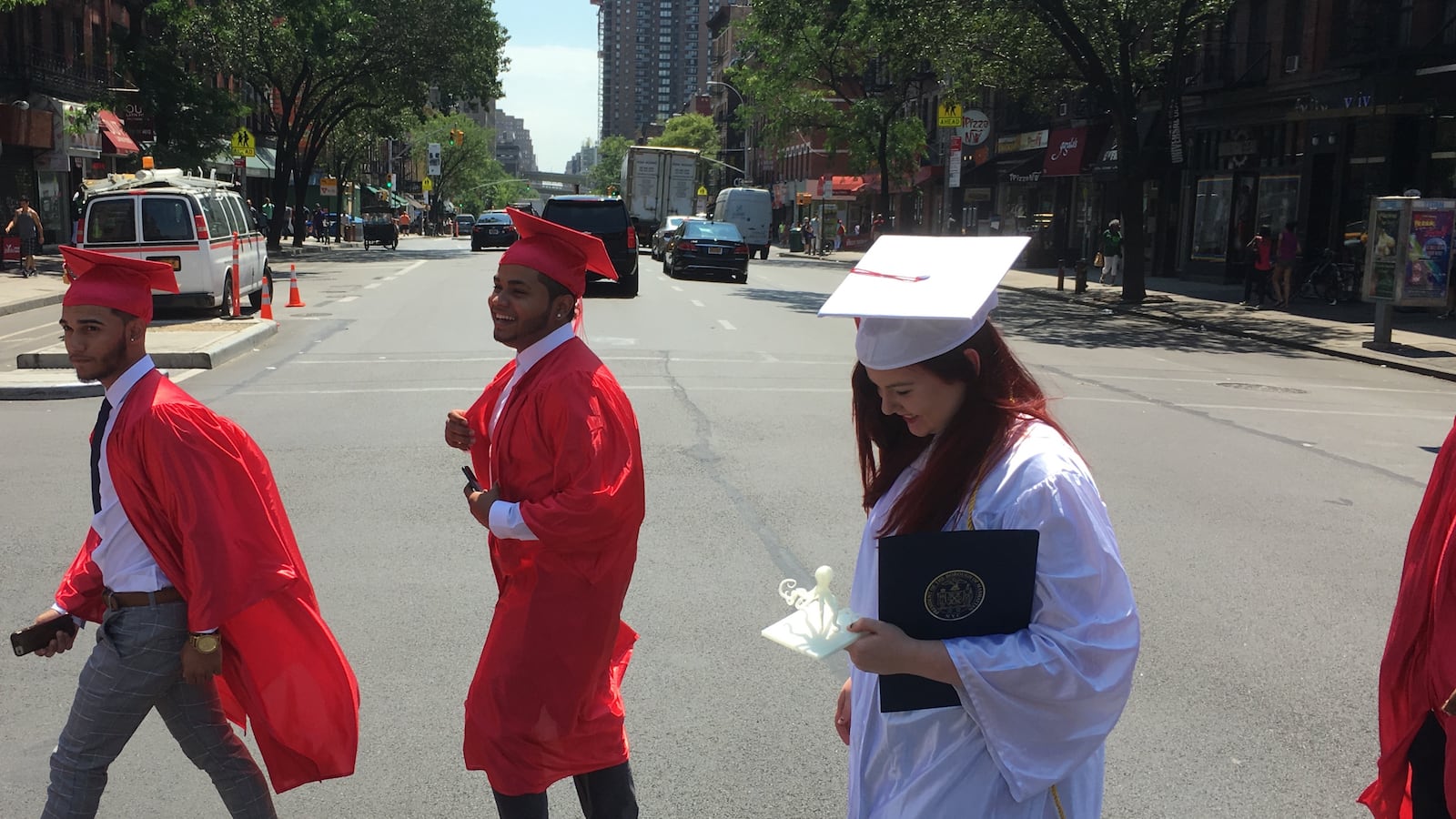New York City’s four-year graduation rate hit 72.6 percent last school year, the highest rate in city history and a two-point increase over 2015.
That continues an upward trajectory for the city, which has seen a 26-point increase in its graduation rate since 2005. It also mirrors statewide and nationwide trends of rising graduation rates: across New York state, the graduation rate increased to 81.4 percent, from 80.3 percent last year.
But the numbers raise questions about whether the increases represent more student learning, or reflect a number of recent policy changes that have made it easier for New York’s students to cross the finish line. Only 51 percent of the city’s graduates were also deemed ready for college, or whether they would qualify to avoid remedial classes at CUNY.
Significant racial disparities also persist: Black and Hispanic students graduated at far lower rates than their white and Asian peers. And while the graduation rate for students with disabilities increased, the rate for English language learners saw a dramatic drop.
Still, the graduation rates are good news for Mayor Bill de Blasio, who is up for re-election this year and has set a goal of a 80 percent graduation rate by 2026. De Blasio called the new numbers evidence that the city’s schools “are unquestionably the strongest they’ve ever been.”
State Education Commissioner MaryEllen Elia also touted the gains, but pointed to several trends, including a large racial achievement gap and a the drop in graduation rates for English language learners, as cause for concern. In New York City, just 27 percent of current English learners graduated, a 9.6 percent decrease over the previous year.
“These findings are disturbing and much more work needs to be done to ensure that ELLs are getting the services they need to stay in school and to graduate,” Elia said.
The city said that was because its group of English learners was smaller and needier than in years past. A spokeswoman said the graduation rate for a combined group of English learners and students who had once been English learners was flat.
Another possible reason graduation rates for English learners fell was that more of them dropped out. The dropout rate for that group in city schools increased from 21.6 percent to 27 percent.
The state made several changes last year that allowed students to earn diplomas in new ways. One allows students to substitute a skills certificate for a final Regents exam, and the other lets certain students with disabilities graduate with after passing just two Regents exams. (Most students must pass five.) More students were also eligible to appeal a failed Regents exam this year.
Elia said that 418 students statewide benefited from that new graduation option for students with disabilities. The state did not provide information about how many students took advantage of the more generous appeals process.
As in previous years, rates differed significantly for black and Hispanic students and those with disabilities compared with their peers. Though 82 percent of white students and almost 86 percent of Asian students graduated, only 68 percent of black students and 67 percent of Hispanic students did.
Black and Hispanic students saw a larger uptick in graduation rates compared with their white and Asian peers. The city saw a jump in graduation rates for students with disabilities from 37.6 to 41.3 percent.
De Blasio seized on the news as evidence that his “Equity and Excellence” agenda, which includes initiatives to increase counseling and algebra instruction, is paying off. The city also used the graduation numbers to tout its Renewal program, which is designed to turn around 86 of the city’s lowest-performing schools by flooding them with extra social services and academic support.
Of the 31 Renewal high schools, graduation rates increased at 20 of them; 11 saw decreases.
“We know that there is a lot more work to do,” schools Chancellor Carmen Fariña said in a statement, “and we are laser-focused on continuing to improve student achievement at our Renewal Schools.”

